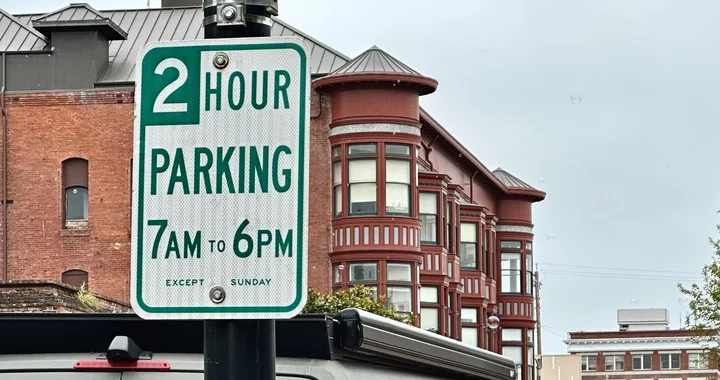UH OH: More Than 100 Individuals in Humboldt Exposed to Measles Last Week (But Most are Likely Immune, Says DHHS)
LoCO Staff / Thursday, May 16, 2024 @ 4:22 p.m. / Health
Humboldt County Department of Health & Human Services press release:
Public Health staff have been in contact with at least 109 people who were exposed to measles after an individual with the virus visited two Eureka locations late last week and is asking anyone who thinks they may have been exposed, but has not been contacted, to call 707-268-2182.
Through interviews, vaccine records and in some cases immunity testing, the majority of those who were known to be exposed are likely immune to measles, and 10 individuals were given the post-exposure prophylaxis vaccine which can be given up to 72 hours after exposure.
On Friday, May 10, the Humboldt County Department of Health & Human Services issued a news release informing the community that individuals who visited the Days Inn by Wyndham, 270 Fifth St. in Eureka from Thursday, May 9, at 2 p.m. through Friday, May 10, at 3 a.m. or the Providence St. Joseph Hospital Emergency Department, 2700 Dolbeer St. in Eureka Friday, May 10, between 2:30 a.m. and 6:30 a.m. may have been exposed to measles.
If you were inside of either of these locations during the times mentioned and have not been in contact with Public Health staff, please call 707-268-2182, whether or not you are experiencing symptoms. A Public Health nurse will evaluate your possible exposure, help determine your immunity status, and provide additional information.
Anyone who contracted the virus after last week’s exposure would start to be contagious anywhere from early Friday morning through May 31. If you think you may have measles, contact your primary care provider or Public Health. Do not physically go into a medical facility.
According to the California Department of Public Health, measles is a highly contagious virus that lives in the nose and throat mucus of an infected person. It can spread to others through coughing and sneezing. The virus can live for up to one hour in an airspace after the infected person leaves the area, and other people who breathe the contaminated air or touch the infected surface, then touch their eyes, noses or mouths can become infected.It can take anywhere from 7 to 21 days to develop symptoms after exposure to measles, and symptoms usually begin with a fever that lasts for a couple of days, followed by a cough, runny nose, conjunctivitis (pink eye) and a rash. The rash typically appears first on the face, along the hairline and behind the ears and then affects the rest of the body. Infected people are usually contagious from about four days before their rash starts to four days afterward. Children under 5 years old and people who are pregnant or have compromised immune systems are at highest risk for severe disease and complications from measles.
Measles is a vaccine-preventable illness. The measles, mumps and rubella (MMR) vaccine is 97% effective at preventing illness. For more information about the vaccine, contact your primary care provider and visit cdc.gov/measles/vaccination.html.
Most children and young adults’ digital vaccination records are available through the California Department of Public Health’s Digital Vaccine Record: myvaccinerecord.cdph.ca.gov.
BOOKED
Today: 4 felonies, 3 misdemeanors, 0 infractions
JUDGED
Humboldt County Superior Court Calendar: Today
CHP REPORTS
Sr299 (HM office): Trfc Collision-No Inj
1656 Union St (HM office): Missing Elderly
ELSEWHERE
RHBB: Vehicle Goes Over the Side Near MM 79.3; Air Ambulance Requested After Late-Afternoon Crash
Governor’s Office: Governor Newsom announces $1.1B in zero-emission transit, safer roadways, and resilient infrastructure
RHBB: Ukiah Police Urge Families to Review E-Bike and E-Scooter Laws
Governor’s Office: Governor Newsom’s SAFE Task Force partners with Long Beach to address encampments
END OF AN ERA: Parking Enforcement Set to Return to Eureka
Andrew Goff / Thursday, May 16, 2024 @ 4:05 p.m. / Traffic
Remember these signs? Time to read them again, we’re afraid
Well, friends, the party is over. After years of those in the know enjoying worry-free parking all across town, the City of Eureka made the bummer announcement Thursday that parking enforcement “will resume in the coming months.”
Yup. The tickets are coming. You’ve been warned. Full release from the City of Eureka below:
The City of Eureka is pleased to announce that revised on-street parking signage has been completed and wide-scale parking enforcement will resume in the coming months. To ensure smooth and orderly parking throughout the City, a new full-time Parking Enforcement Officer has been hired and will begin implementing the improved on-street parking time limits. Downtown/Old Town residents and visitors are urged to be mindful of parking regulations as parking violations will be actively monitored. Key points to remember include:
• Pay Attention to Signage: Always read and follow the posted parking signs to avoid violations.
• Stay Within Marked Spaces: Ensure your vehicle is parked within the designated lines to maximize space and prevent inconvenience to others.
• Adhere to Time Limits: Observe the time restrictions on parking spots to allow fair use for everyone.
• Red Zones: New state requirements restrict parking within 20ft of the approach side of marked and unmarked crosswalks, regardless of whether adjacent curbs are painted red. The City is in the process of repainting the Old Town area to reflect the new requirements and will address other areas in the future. Parking in any area with red curb is a violation and subject to citation. Please ensure that your vehicle is parked entirely outside of any red zone.
Restarting enforcement of on-street parking regulations is the first of several changes coming to our parking enforcement program. Addition changes include new ways of tracking timed parking in City lots, a system that allows visitors to pay for timed parking using their smartphone and employee parking permits. These changes are intended to create a more convenient and efficient parking payment system for residents and visitors.
The City of Eureka is committed to creating a pleasant and accessible environment for all who visit and work in Old Town. By cooperating with the parking regulations, you can help achieve this goal.
Having Finally Gotten Its Act Together on Short-Term Rentals, the County is Now Accepting Permit Applications from Existing Operators in Unincorporated Humboldt
LoCO Staff / Thursday, May 16, 2024 @ 1:18 p.m. / Local Government
File photo.
###
Press release from the County of Humboldt:
Short-term rental (STR) operators in inland areas of unincorporated Humboldt County can now apply for STR permits.
On March 5, 2024, the Humboldt County Board of Supervisors adopted the Short-Term Rental Ordinance requiring short-term rental operators to obtain permits for their STRs.
Existing operators have until Monday, June 3 to apply for a STR permit to receive exceptions from both neighborhood concentration and the Cap. Neighborhood concentration and the Cap regulate the maximum amount of STRs allowed within specific areas of the county. Applications received after June 3 will be treated as new operations subject to these regulations.
STR permits are not yet open for operators in the coastal zone as the Coastal Short-Term Rental Ordinance is awaiting certification from the California Coastal Commission.
For more information on the Short-Term Rental Ordinance, please visit the county’s Short-Term Rental Ordinance webpage.
How to Apply for a Permit
Permit applications will be accepted via the county’s online permit processing system, known as the Accela Citizen Access Customer Portal. To learn more on how to use Accela and find support resources on how to apply for a short-term rental planning permit, please visit the county’s Online Permit Management webpage.
Planning & Building Department staff are available at the department’s front counter, located at 3015 H St. in Eureka, to help community members who require additional assistance or who are unable to submit their permit applications online. There is a publicly accessible computer terminal in the lobby for customers to submit their applications, if needed.
Please email planningbuilding@co.humboldt.ca.us or call 707-445-7245 for further assistance.
23-Year-Old Missing in the Trinity Following Presumed Drowning Last Night, Sheriff’s Office Says; Search Underway
LoCO Staff / Thursday, May 16, 2024 @ 12:42 p.m. / Emergencies
PREVIOUSLY:
###
Press release from the Humboldt County Sheriff’s Office:
On 5/15/2024, at about 6:00 p.m., Humboldt County Sheriff’s Office deputies were dispatched to the Kimtu Beach area of Willow Creek, CA. for the report of a possible drowning.
According to witnesses, an adult male was swimming in the Trinity River at that location when he showed signs of distress before disappearing below the water and had not been observed to resurface. Upon the arrival of first responders, another member of the missing man’s party was found to be stranded on a rock and unable to return to shore.
Deputies began obtaining necessary information and conducting search and rescue efforts from the shore as members of the H.C.S.O. Special Services Division also responded with a boat to begin an on the water search. Additionally, members of the Willow Creek Volunteer Fire Department, Hoopa Volunteer Fire Department, Hawkins Bar Volunteer Fire Department, Willow Creek/Hoopa Ambulance, and a U.S. Coast Guard helicopter also responded to assist with rescue efforts. Upon arrival of the U.S.C.G. helicopter, the male subject who was stranded on a rock was able to be rescued by the helicopter crew.
These agencies continued search efforts into the late evening, but were unable to locate the missing man, who has been identified as 23-year-old Jeshua Wilkinson of Arcata. Jeshua is described as being of Hawaiian descent, 5 foot 9 inches tall, approximately 160 pounds, short black hair, brown eyes, and last seen wearing black shorts. The H.C.S.O. and partner agencies, including a California Highway Patrol helicopter, are currently continuing search efforts in the area in an attempt to locate and recover Jeshua.
Anyone with information on this case is asked to contact the Humboldt County Sheriff’s Office at (707) 445-7251.
North Coast Repertory Theatre and Playhouse Arts Land $70,000 in National Endowment for the Arts Grants
LoCO Staff / Thursday, May 16, 2024 @ 10:16 a.m. / Theater
###
From the office of U.S. Congressman Jared Huffman:
Washington, D.C. – Today, U.S. Representative Jared Huffman (CA-02) shared the news that three recipients in California’s Second Congressional District have been awarded a total of $120,000 through the National Endowment for the Arts (NEA).
About the Projects
California Film Institute
1001 LOOTENS PL # 220
SAN RAFAEL, CA 94901-3112
$30,000
Grants for Arts Projects - Media Arts
Purpose: To support the Mill Valley Film Festival and related community programming.Marin Shakespeare Company
144 GARDEN AVE
SAN RAFAEL, CA 94903-4220
$20,000
Grants for Arts Projects - Theater
Purpose: To support the development and production of a new, original theater work by the Returned Citizens Theatre Troupe.NCRT, Inc.
300 5TH ST
EUREKA, CA 95501-0306
$30,000
Grants for Arts Projects - Theater
Purpose: To support the development and North Coast Repertory Theatre’s regional touring production of “Wusatoumuduk,” a new play in the Wiyot language.Playhouse Arts
1251 9TH ST
ARCATA, CA 95521-5701
$40,000
Grants for Arts Projects - Local Arts Agencies
Purpose: To support arts education workshops and artist residencies in rural schools.About the Funding
As part of the application review process, the NEA works with panelists with relevant knowledge and experience who reviewed the applications and rated them in accordance with published review criteria. Recommendations were then presented to the National Council on the Arts. The council made its recommendations to the NEA Chair, who then made the final decision on all grant awards. Learn more about the grant review process or volunteer to be a panelist.Grants for Arts Projects (GAP) provides expansive funding opportunities to strengthen the nation’s arts and cultural ecosystem. It is the National Endowment for the Arts’ largest grants program for organizations, with matching grants ranging from $10,000 to $100,000.
Grants for Arts Projects supports an expansive range of projects of varying sizes and scope across artistic disciplines with a focus on agency priorities: opportunities for public engagement with the arts and arts education, the integration of the arts with strategies that promote the health and well-being of people and communities, and the improvement of overall capacity and capabilities within the arts sector, including the efforts of nationwide and field-specific service organizations.
Last Night’s Garage Fire Near Highland Park Caused by ‘Improper Extinguishment of Smoking Materials,’ Humboldt Bay Fire Says
LoCO Staff / Thursday, May 16, 2024 @ 9:19 a.m. / Fire
Press release from Humboldt Bay Fire:
Shortly after 7 p.m. on Wednesday, May 16th Humboldt Bay Fire responded to a reported garage on fire at the 3400 block of Oregon Street in Eureka. HBF responded with three engines, one ladder truck, and one Battalion Chief. Additionally, two volunteer Fire Support personnel responded and provided traffic control.
The first arriving unit, Engine 8113, arrived on scene and reported a fully-involved detached garage structure with possible extension to the nearby house. The engine company secured their own water supply from an adjoining fire hydrant and quickly applied water to the fire with a heavy stream nozzle. The next arriving unit, Engine 8112, assumed search and conducted a primary search of the house to ensure all occupants were out and safe. The fire was knocked down within a few minutes of the first arriving units. With the fire attack crews transitioning to an overhaul phase to ensure the fire was completely extinguished. Engine 8115 arrived on scene and assisted Engine 8113 with the extinguishment assignment. There was no extension or damage to the house and all occupants were accounted for. No civilians or firefighters were injured during the incident.
Following complete extinguishment of the fire, HBF investigators investigated the fire and determined it to be accidental due to improper extinguishment of smoking materials.
PG&E responded and secured the utility hazards to the detached garage.
The total estimated value of the structure saved is $70,000, with fire and smoke damage estimated to be $50,000.Humboldt Bay Fire would like to thank City Ambulance, Samoa Peninsula Fire, Arcata Fire, and PG&E for their assistance on this incident, and in providing station coverage. Humboldt Bay Fire would like to remind everyone to properly extinguish and dispose of smoking materials, and to make sure they are “dead out!”
Gig Companies Spent $200 Million to Write Their Own Labor Law. The State Supreme Court Could Throw It Out
Levi Sumagaysay / Thursday, May 16, 2024 @ 7:20 a.m. / Sacramento
Photo by Thought Catalog on Unsplash
The California Supreme Court will hear oral arguments next Tuesday in a case that could change the fate of more than 1 million gig workers in the state — and perhaps the way we hail rides, order takeout or get groceries delivered.
Four years ago, voters approved Proposition 22, a ballot measure sponsored by Uber, Lyft, DoorDash and Instacart that allowed the companies to continue to treat their ride-hailing drivers and delivery workers as independent contractors. Prop. 22 was the industry’s response to Assembly Bill 5, a state law that codified a state Supreme Court decision that would have required the companies to classify those workers as employees.
Treating gig workers as independent contractors is central to the business model of the California-based companies, the middlemen that gave rise to the on-demand, app-based gig economy that has permeated our culture. The companies are fighting to hang on to that model, saying it helps them provide gig workers with flexible schedules. Critics say it lets the companies avoid paying employment taxes and shift financial responsibility to their workers and customers, plus governments.
In 2021, a Superior Court judge invalidated Prop. 22, saying it limits the Legislature’s constitutional power to create and enforce a complete workers’ compensation system because it declares gig workers independent contractors ineligible for the benefit. While the state Supreme Court will be considering this narrow issue, because of a clause in the initiative, it’s possible the whole law will be thrown out because of it.
The gig companies appealed the judge’s decision, and a state appeals court ruled 2 to 1 in their favor last year. SEIU California then appealed that decision, and the state’s highest court agreed to hear the case.
Fifty-eight percent of voters passed Prop. 22 after gig companies spent more than $200 million on the campaign. After it became law, app-based platform workers became eligible for some benefits, such as guaranteed weekly earnings of 120% of minimum wage, health care stipends, and occupational-accident and accidental-death insurance.
Although industry-backed polls show many gig workers voted for Prop. 22 and have benefited from some of its provisions, gig workers continue to complain about their pay and working conditions.
In April, drivers protested, as they have many times, at Uber and Lyft headquarters in San Francisco. They said they were there because of low wages, safety concerns and “deactivations” — getting kicked off the apps and losing their ability to work, sometimes suddenly and without knowing why.
“It’s hard for drivers to make ends meet,” said Cesar Palancares, a field organizer for Bay Area-based worker-advocacy groups Gig Workers Rising and Working Partnerships USA, and a leader of the protests. Nowadays, he said “drivers often have to work 12 hours to earn what they used to earn working six or seven hours.”
Palancares said pay is still low because workers’ eligibility for the earnings guarantee is based on the time they agree to take on a gig and the time they spend on that ride or delivery, but not on the time they spend waiting for a gig.
Los Angeles-based Rideshare Drivers United is so concerned about gig-worker pay that it plans to push for pay standards, like those in New York City and Seattle, even if Prop. 22 is overturned.
“We want to build pay regulation on top of labor rights, specifically catering to how we work in this industry,” said Nicole Moore, president of Rideshare Drivers United, which plans to advocate for legislation or ordinances that would establish a rate card with a minimum rate based on miles and minutes driven.
“What we’ve learned from NYC is you can set a rate card, and you can have data from the companies that ensures that pay is high enough so your expenses are being covered,” Moore said.
The gig industry’s current estimates for average worker earnings differ widely from labor groups’ estimates: A DoorDash spokesperson said delivery workers’ average earnings were $36 an hour last year; an Uber spokesperson said its drivers’ average earnings were $33 “per utilized hour” as of the fourth quarter of last year. Industry-wide, Molly Weedn, a spokesperson for Protect App-Based Drivers + Services, said that in 2022, California drivers earned an average of $34.46 per “active hour,” including tips, an increase of 26% compared with pre-Prop. 22 times.
But labor groups and academics have long disputed those figures, including in the legal briefs they submitted ahead of the Supreme Court hearing, because companies do not count the time gig workers wait for an actual ride or delivery. They also say the industry figures don’t factor in workers’ costs for fuel, maintaining their vehicles, health care costs — not all gig workers are eligible for the stipends — and more. A study by National Equity Atlas and others, done in 2021 after Prop. 22 took effect, found that the workers’ average earnings were as little as $6.20 an hour.
Oral arguments’ focus
The SEIU and the four gig-worker plaintiffs will argue that the state constitution grants the Legislature “unlimited power to enforce a complete workers’ compensation system.” The Legislature already spoke when it passed AB 5, they say. So they contend that “the Legislature’s exercise of that power can be withdrawn only by a constitutional amendment.”
The interveners and appellants — the gig companies and the state, which is required to defend the law — will argue that the Legislature’s “plenary,” or absolute, power over workers’ comp is not exclusive. And they will say no subject is beyond the scope of the initiative process.
“The legal issue is actually pretty straightforward,” said Kurt Oneto, a lawyer for the gig companies. Oneto said a constitutional amendment adopted by California voters in 1918 that gave the Legislature power over workers’ comp “unlimited by any provision” in the constitution was “only enacted to prevent courts from invalidating workers’ comp” — not to limit voters’ power over it.
This decision could set a national precedent in the nagging issue of worker classification. So despite the narrow focus of what the Supreme Court is set to consider, a wide array of legal briefs in the case rehash the pros and cons of the gig economy.
Prop. 22 proponents’ arguments
Those urging the court to uphold Prop. 22 stress that the Legislature doesn’t have exclusive reign over workers’ comp. They say the people — through the ballot initiative — have just as much say. They also say the gig economy helps marginalized workers and communities.
- Former state Sens. Robert Timothy Leslie and Stephen James Peace: Based on their experience as lawmakers, they say “the state Legislature is far from powerless when it comes to amending an initiative” and that lawmakers can amend Prop. 22 if they want.
- David A. Carrillo and Stephen M. Duvernay (California constitution scholars): “Excluding workers’ compensation (or any subject) would partly invalidate the electorate’s lawmaking power by creating a new subject matter exemption from the initiative.”
- Crum & Forster, a holding company of various insurance underwriting companies: Occupational accident insurance, which is based on individual use, is cheaper to provide than full workers’ comp, which is charged per employee and based on a formula. The former makes more sense for gig workers because many of them work part time. “Because the risks confronted by app-based drivers are few and easily defined, premiums need not reflect potential exposure to the myriad risks confronted by employees working in offices, factories, warehouses, agriculture, and other occupations.”
- Independent Drivers Alliance of California: This group of 400 gig workers said the benefits under Prop. 22 are “something that many of them have come to expect and even need.”
- Citizens in Charge and The Initiative and Referendum Institute at the University of Southern California: “Large corporations are not the only type of special interest that can forestall the will of the People.” They say the SEIU is a special interest that influenced the Legislature to pass AB 5.
- California Asian Pacific Chamber of Commerce, California Hispanic Chambers of Commerce, NAACP California Hawaii State Conference, National Action Network Los Angeles, National Action Network Sacramento Chapter Inc., and National Diversity Coalition: The independent contractor model provides not just marginalized workers with earning opportunities, it also helps “the provision of transportation, food, and delivery services to communities of color that have been historically underserved.” If Prop. 22 is overturned, they say gig companies will reduce the number of gig workers on their platforms and there will be fewer earning opportunities for “communities of color,” which according to a Pew survey are “more likely to have earned money in the gig economy than White counterparts.”
Prop. 22 opponents’ arguments
Those asking the court to declare the law unconstitutional warn of a slippery slope. They say allowing corporations to carve out their own labor laws could lead to a continued gig-ification of work in other industries, which will affect not just the workers who will largely be without a safety net, but also the government and the rest of society.
- State Sen. Dave Cortese and Assemblymember Liz Ortega: The “minimal insurance benefits” offered by Prop. 22 — occupational accident insurance and accidental death insurance — are not a complete workers’ comp system, and “the wholesale removal of app-based drivers from the system established by the Legislature over the past century runs contrary” to the power the state constitution gives lawmakers to enforce a complete workers’ comp system.
- California Applicants’ Attorneys Association: The group also said the occupational accident insurance offered under Prop. 22 is limited compared to what workers’ comp offers: medical treatment; temporary or permanent payments depending on the injury; and supplemental job retraining benefits. “The likely result is more injured app-based drivers will seek benefits through public systems” like state or federal disability systems.
- City and County of San Francisco, the City of Oakland, the City of San Diego, and the County of Santa Clara: “The wholesale elimination of worker protection laws (including minimum wage protections for all hours worked, overtime, and expense reimbursement laws) can mean the difference between needing to visit a food pantry or not.” The municipalities say they administer such programs, and therefore taxpayers end up subsidizing “what the law asks employers to contribute through wages and benefits.”
- Law professors Sameer Ashar, Veena Dubal, Catherine Fisk, Charlotte Garden, Joseph Grodin, William B. Gould IV, Stephen Lee, Leticia Saucedo, Reuel Schiller, Katherine Stone, and Noah D. Zatz: This group writes that the law lacks a “provision for an administrative body or system to adjudicate claims or disputes. Instead, as is well-known, they are consigned to asserting their claims in the companies’ secret arbitration system.”
- National Employment Law Project, California Labor Federation, Rideshare Drivers United, Gig Workers Rising, Asian Americans Advancing Justice – Asian Law Caucus, Asian Americans Advancing Justice Southern California, PowerSwitch Action, Worksafe, Action Center on Race & the Economy, the Economic Policy Institute, Bet Tzedek, and the California Immigrant Policy Center: Gig workers have few legal protections against opaque, “powerful, algorithmically-driven pay systems, and ‘the possibility remains,’ in the words of one scholar, that on-demand companies… (are offering) vulnerable workers lower wages based on their willingness to accept work at lower prices.” They cite a recent Uber earnings call during which its CEO said the company is “offering the right trip at the right price to the right driver.” Along the same lines, the fact that gig workers are from marginalized groups and communities is unsurprising, they say: “It is no accident that Prop. 22 reinforces and legalizes a second-tier workforce (composed) disproportionately of people of color.” They also cite federal data that shows app-based driving is “one of the most dangerous jobs in America” that includes risks of violence, harassment, injuries and even death on the job.
- Teamsters Locals 396, 542 And 848 and Los Angeles County Federation of Labor, AFL-CIO: “Already, a growing number of secure jobs across the state are being replaced by app-based drivers — including jobs where Amici Curiae have fought for decades to ensure a living wage and strong benefits.” Those include delivery drivers formerly employed by Albertsons.
###
The CalMatters Ideas Festival takes place June 5-6! Find out more and get your tickets at this link.
CalMatters.org is a nonprofit, nonpartisan media venture explaining California policies and politics.








